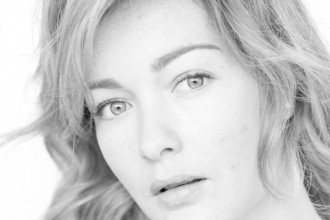Although Livia Carpeggiani left her native Tuscany many years ago, she, and I, and many Italians who have left their homes in Italy, can’t help but occasionally be drawn back to it, yearning for the familiar. It’s perhaps because of this that I was looking forward to meeting Livia for lunch at Cecconi’s, the Italian restaurant in Mayfair behind the Royal Academy of Art. Cecconi’s is about as different from your average understated Tuscan trattoria as is possible, catering to the moneyed Mayfair crowd, with all the finery and chic that goes along with it. A number of Italians would scoff at the place, but as I tuck into my delicious crab ravioli I am reminded once again of why we Italians miss Italy, and why we look for it everywhere and in everything.
Of course, Cecconi’s is also the closest Italian eatery to Almine Rech Gallery where Livia is an Associate Director. Livia spends her days surrounded by beautiful works of art, dealing with a wonderful spectrum of modern and contemporary art, by heavy-hitter artists like Jeff Koons and Richard Prince, alongside a whole new younger generation of rising stars. The success of the gallery is in a large way down to the guiding hand of Almine herself, a collector and art lover, who first opened in Paris in 1997, representing artists such as James Turrell, John McCracken and Joseph Kosuth. Since then, Almine Rech has steady achieved a significant place within the international art market, with galleries in Paris, London and Brussels.
Having achieved such a great deal is no mean feat for this generation of Italians with a passion for art. Livia has had to swim hard against the current of countless Italian art history students and art professionals that end up being either unemployed or working under dodgy contracts that can vanish into thin air.
Although Livia finds herself at the forefront of London’s contemporary art scene, (she is also a prolific patron of London’s artistic institutions such as Tate and Whitechapel) she is simultaneously also one of the many young Italian stars that have demonstrated a talent and interest in art but have not been able to find a flourishing career in Italy, a country that, ironically, is covered from head to toe in art. Back in Italy, Livia was surrounded by art, and developed a great love for it, working at the Salvatore Ferragamo Museum in Florence, and as a fellow of the Peggy Guggenheim Collection for the Venice Biennale. When the time came she chose an undergraduate degree in Political Science. This is not an uncommon path for art professionals nowadays as the art world has become more transactional and is far less academic. A solid degree within social sciences has allowed greater flexibility at the time of choosing a professional focus post-degree, whether in Italy or elsewhere. This trend however, has become more of a necessity in Italy, where studying history or art or visual arts, almost never leads to a career in the cultural sector: one of the many contradictions of a country with such high volume of the West’s artistic masterpieces.
So Livia left. Determined to find her place in the art world, she moved to New York, where she worked at Paula Cooper Gallery and Barbara Gladstone, two of the most acclaimed galleries in New York.
After having spent two years working for Performa, a leading organization dedicated to live performance, and armed with an MA from the Sotheby’s Institute of Art, Livia was then brought on board by Christie’s in London to help with one of the most successful sales of Italian Post-War art to date: Eyes Wide Open. The sale totaled £38,427,400 and established new records for several artists including one for Alberto Burri, for one of his Combustione Plastica, which still holds today. This would be, ironically, one of the greatest professional exposures to Italian art to date, and it happened of course outside of Italy.
When discussing Livia’s career path, it is impossible not to mention the numerous problems that Italian cultural heritage currently faces: the lack of jobs, a heavy bureaucratic system, the skepticism from private investors and the lack of public funding.
I ask Livia whether she would ever like to come back to Italy. Leaning more on the side of no, she nevertheless, like most of us Italian ex-pats, wishes she could, but without a job market that can support the huge demand for talented people in the art, and not limited to research and teaching, but rather to boost the current stagnant art market, it is looking unlikely.
Almine Rech London is presenting Stephane Graff, A Catalogue of Errors May 19 — July 30, 2016





